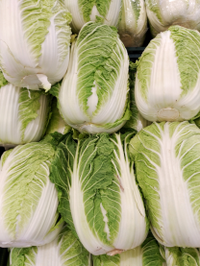
Photo from wikipedia
Melatonin and abscisic acid (ABA) play contrasting roles in regulating leaf senescence in plants. The molecular mechanism underlying the interaction between melatonin and ABA involved in leaf senescence, however, remains… Click to show full abstract
Melatonin and abscisic acid (ABA) play contrasting roles in regulating leaf senescence in plants. The molecular mechanism underlying the interaction between melatonin and ABA involved in leaf senescence, however, remains poorly defined. Herein, we found that exogenous application of melatonin delayed the senescence of Chinese flowering cabbage, accompanied by reduced expression of chlorophyll catabolic and ABA biosynthetic genes, and a lower endogenous ABA level. Significantly, three nucleus‐localized transcriptional activators BrABF1, BrABF4, and BrABI5 were identified, and their expressions were repressed by melatonin. In vitro and in vivo binding experiments revealed that BrABF1, BrABF4, and BrABI5 activated the transcription of a series of ABA biosynthetic and chlorophyll catabolic genes by physically binding to their promoters. Moreover, transient over‐expression of BrABF1, BrABF4, and BrABI5 in tobacco leaves induced ABA accumulation and promoted chlorophyll degradation by upregulating tobacco ABA biosynthetic and chlorophyll catabolic genes, resulting in the accelerated leaf senescence. These effects were significantly attenuated by melatonin treatment. Our findings suggest that melatonin‐mediated inhibition of leaf senescence involves suppression of ABFs‐mediated ABA biosynthesis and chlorophyll degradation. Unraveling of the molecular regulatory mechanism of leaf senescence controlled by ABA and melatonin expands our understanding of the regulation of this phenomenon and offers potentially more effective molecular breeding strategies for extending the shelf‐life of Chinese flowering cabbage.
Journal Title: Journal of Pineal Research
Year Published: 2019
Link to full text (if available)
Share on Social Media: Sign Up to like & get
recommendations!